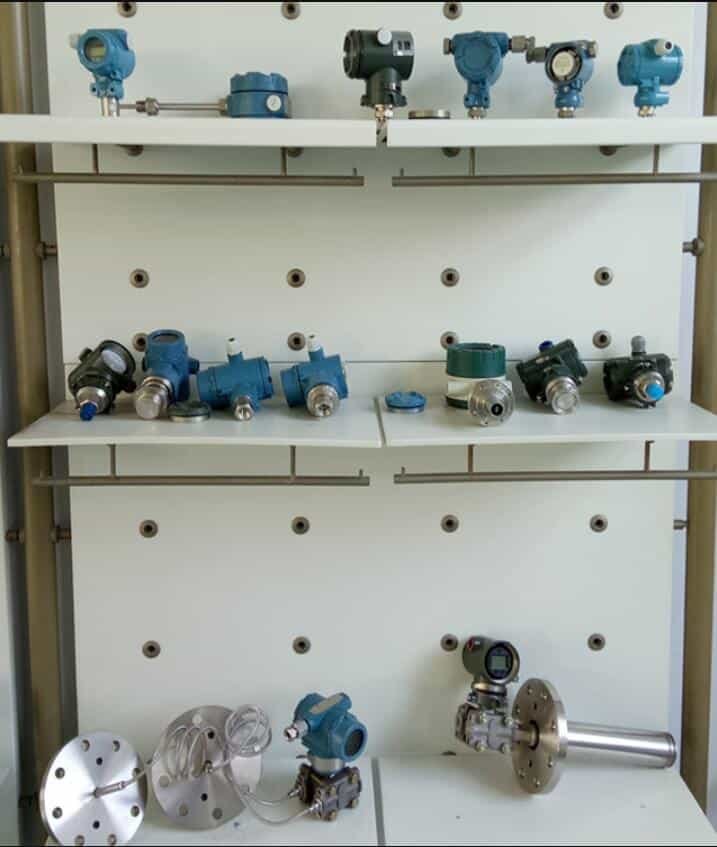The static pressure sensor or static pressure transmitter is based on atmospheric pressure or absolute vacuum, and compares the difference between the measured pressure and atmospheric pressure or absolute vacuum.
The application of Static Pressure Sensors and Transmitter in industry is not only to measure the pressure of pipelines or tanks, but also to measure liquid level. Let’s look at it in detail below.

What is a static pressure sensor?
Static pressure sensors are often used to measure static air pressure. Such as the static pressure on air filters and cooling coils, the input and discharge pressure of blowers, etc.
In ventilation systems, static pressure is the pressure of the air inside the building relative to the air outside when the exhaust fans are turned on. Measuring and maintaining proper negative pressure allows ventilation systems to more effectively mix outside air with inside air.
Types
Diaphragm pressure sensors are based on the structure of the sensor. According to the sensing principle, diaphragm pressure sensors can be divided into different types such as piezoresistive, strain gauge, inductive, capacitive, and piezoelectric.
Among the above-mentioned pressure sensors with different principles, piezoelectric pressure sensors are only suitable for measuring dynamic pressure, so dynamic calibration is required;
Other dynamic and static pressures can be measured, and the most widely used one belongs to the quasi-static measurement with very low frequency. Therefore, static calibration is the most widely used calibration form. When the measured pressure frequency band is wide, all kinds of pressure sensors should be calibrated for frequency response.
Learn more about: Pressure Transmitter Calibration Formula
Hydro Static Level Transmitter
Hydrostatic level transmitters are based on the principle that the measured static pressure of a liquid is proportional to the height of the liquid. A device that converts static pressure into electrical signals by using the piezoresistive effect of diffused silicon or ceramic sensitive elements.
After temperature compensation and linear correction, it is converted into 4-20mADC standard current signal output.
The sensor part of the submersible static pressure liquid level transmitter can be directly put into the liquid. The transmitter part can be fixed by flange or bracket, which is very convenient to install and use.
Applications
Read More about: Common Pressure Sensor Applications
More Pressure Measurement Solutions
Sino-Inst is a manufacturer of Static Pressure Sensor and Transmitters. We offer more than 50 types of pressure sensors. Main products include compact pressure transmitters, industrial pressure transmitters, differential pressure transmitters, single pressure crystal silicon transmittance pressure transmitters, diff pressure transmitter, high temperature pressure transmitter, explosion-proof pressure transmitter, pressure transmitter, custom pressure transmitter, with remote pressure transmitter, 316 diaphragm pressure transmitter.
Read more about: What is Diaphragm pressure gauge?
The static pressure sensor or static pressure transmitter is based on atmospheric pressure or absolute vacuum, and compares the difference between the measured pressure and atmospheric pressure or absolute vacuum.
For static, slowly changing pressure measurement. The sensor usually uses a high stability, thin film piezoresistive sensing element. The stability of the sensor and the accuracy of the measurement can meet the requirements of the industrial control field. There are a variety of connectors, electronic connections, signal output formats, accuracy and a wide range of ranges to choose from. These components are an ideal match for process monitoring and control, liquid level measurement, hydraulic system test studies and test cell requirements.
Sino-Inst’s entire team is well trained, so we can ensure that each customer’s needs are met. If you need any help with your product requirements, whether it is a Static Pressure Sensor and Transmitter, level sensors, or other equipment, please give us a call.
Request a Quote
Wu Peng, born in 1980, is a highly respected and accomplished male engineer with extensive experience in the field of automation. With over 20 years of industry experience, Wu has made significant contributions to both academia and engineering projects.
Throughout his career, Wu Peng has participated in numerous national and international engineering projects. Some of his most notable projects include the development of an intelligent control system for oil refineries, the design of a cutting-edge distributed control system for petrochemical plants, and the optimization of control algorithms for natural gas pipelines.